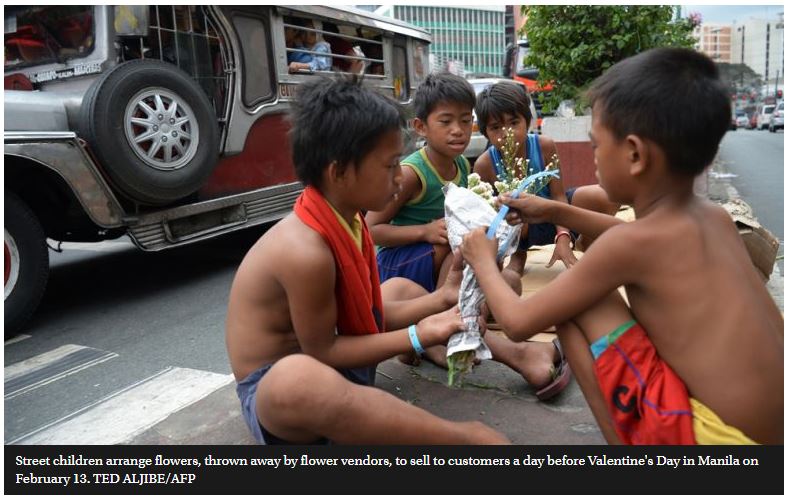Poverty rate in the Philippines falls to 16.6 per cent
As the creation of better-paying jobs offset the impact of last year’s high inflation episode, the poverty incidence rate in the country dropped to 16.6 per cent last year, the government reported on Friday.
At a national poverty threshold – the minimum income required to meet basic food and non-food requirements – of 10,727 pesos ($211) a month for every family of five, National Statistician Claire Dennis S Mapa said the poverty rate declined from the updated 23.3 per cent in 2015, based on 2012 prices.
The reduction in poverty incidence translated to 17.6 million poor Filipinos as of last year, lower than 2015’s 23.5 million.
National Economic and Development Authority (Neda) undersecretary and officer-in-charge Adoracion M Navarro said 5.9 million Filipinos were lifted out of poverty between 2015 and 2018, a faster pace of poverty reduction as the government had targeted bringing down the rate to 14 per cent by 2022 by improving the livelihood of six million Filipinos.
“With a poverty reduction rate of 2.23 percentage points per annum, we are not only on track to meet our PDP [Philippine Development Plan 2017-2022] target. We are also likely to meet the sustainable development goal or SDG target of eradicating extreme poverty, as defined by the international poverty line, and cutting by half the proportion of the population living below the national poverty line by 2030,” Navarro said.
As Neda was undertaking the midterm review of the six-year PDP serving as the Duterte administration’s socioeconomic blueprint, Neda undersecretary Rosemarie G Edillon said the economic team might revisit the poverty-reduction goal for 2022.
“Of course, this will have to be cleared with our principals, but I’m sure that they will go for that even more ambitious target,” Edillon said, referring to the economic managers.
Poverty incidence was reduced even as headline inflation averaged at a 10-year high of 5.2 per cent last year due to new or higher excise taxes slapped on consumption under the Tax Reform for Acceleration and Inclusion Act (Train), skyrocketing global oil prices and domestic food supply bottlenecks, especially of rice.
Mapa said that as high inflation had an impact on the poverty threshold last year, the full-year 2018 poverty line increased 13.5 per cent from 9,452 pesos per family three years earlier.
“But when you look at reduction in poverty, you also have to look at the income side. The income of the poorest 30 per cent [of households] really increased much, much faster than the increase in the poverty threshold – it was higher at [more than] 30 per cent in the last three years,” Mapa said.
Edillon noted that employment generation was being ramped up such that the government reported last Thursday that the unemployment rate dropped to a 14-year low in October.
Also, “with a vibrant economy that continues to generate good jobs, the mean salaries and wages for the population went up by 22.8 per cent to 156,114 pesos in 2018 from 127,122 pesos in 2015”, Navarro said.
“For those in the bottom 30 per cent of the population, mean per capita income increased by 31.9 per cent. This outpaced the 18 per cent income growth experienced by the top 20 per cent of households. This is a good sign that our programmes targeting the poor are working well,” Navarro added.
According to Navarro, the government’s conditional and unconditional cash grants to poor families as well as workers impacted by the higher excise taxes under the Train Law “provided additional income to the poorest sectors of the society”.
“Transfers, which include cash transfers from the government received by households from the bottom three deciles, increased by 34.8 per cent, 32.8 per cent and 25.0 per cent respectively,” according to Navarro.
PHILIPPINE DAILY INQUIRER/ANN


 English
English




